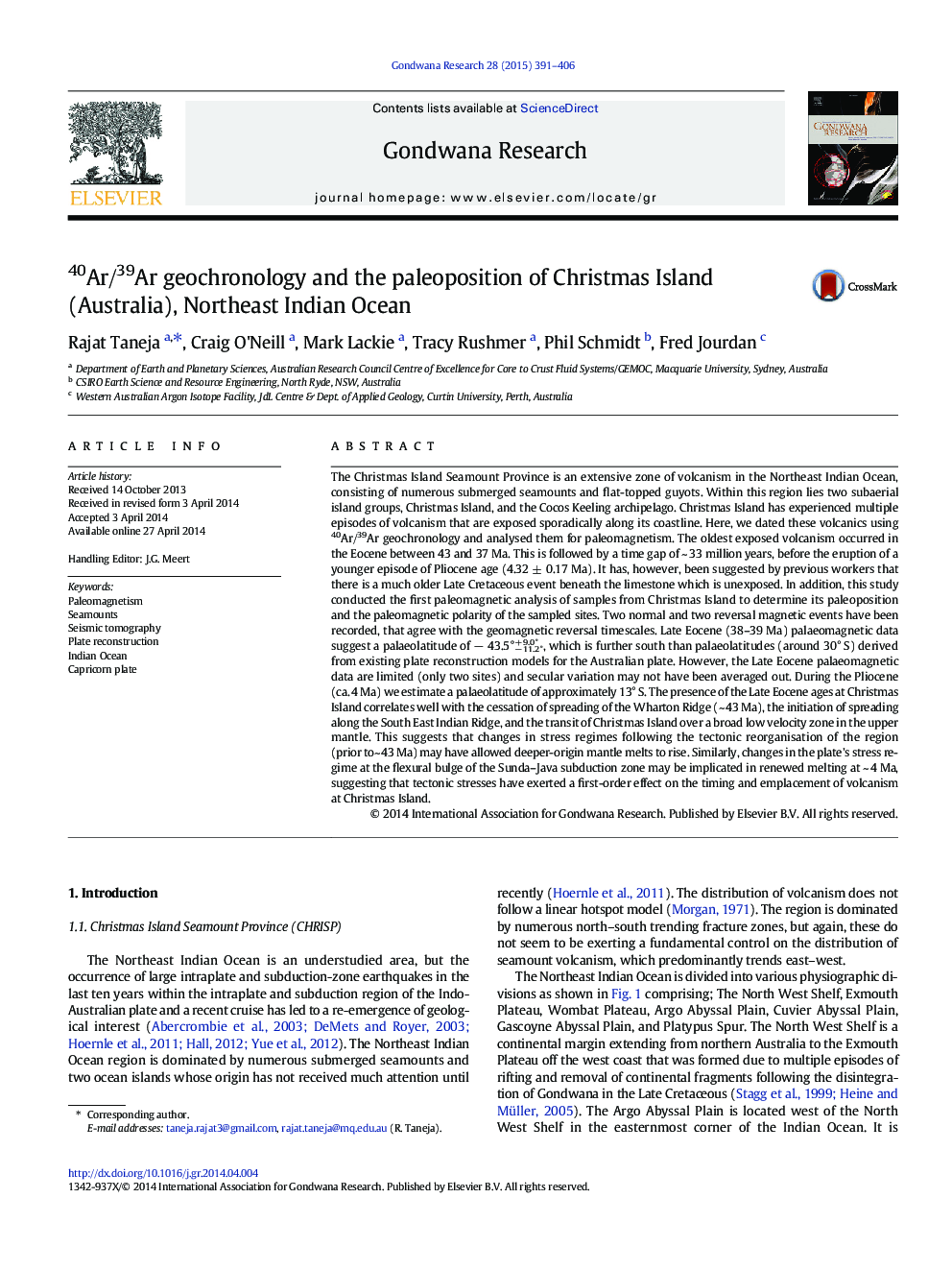| کد مقاله | کد نشریه | سال انتشار | مقاله انگلیسی | نسخه تمام متن |
|---|---|---|---|---|
| 4726815 | 1356347 | 2015 | 16 صفحه PDF | دانلود رایگان |

• We present a comprehensive paleo-latitudinal analysis of basalts from Christmas Island.
• Christmas Island has exposed volcanic outcrop in the range of 43–37 Ma and ~ 4 Ma.
• The paleoposition of the Eocene sequences is suggested to be around 43° S.
• The paleoposition in Pliocene is around 13° S and confirms with the flexural bulge.
The Christmas Island Seamount Province is an extensive zone of volcanism in the Northeast Indian Ocean, consisting of numerous submerged seamounts and flat-topped guyots. Within this region lies two subaerial island groups, Christmas Island, and the Cocos Keeling archipelago. Christmas Island has experienced multiple episodes of volcanism that are exposed sporadically along its coastline. Here, we dated these volcanics using 40Ar/39Ar geochronology and analysed them for paleomagnetism. The oldest exposed volcanism occurred in the Eocene between 43 and 37 Ma. This is followed by a time gap of ~ 33 million years, before the eruption of a younger episode of Pliocene age (4.32 ± 0.17 Ma). It has, however, been suggested by previous workers that there is a much older Late Cretaceous event beneath the limestone which is unexposed. In addition, this study conducted the first paleomagnetic analysis of samples from Christmas Island to determine its paleoposition and the paleomagnetic polarity of the sampled sites. Two normal and two reversal magnetic events have been recorded, that agree with the geomagnetic reversal timescales. Late Eocene (38–39 Ma) palaeomagnetic data suggest a palaeolatitude of − 43.5°− 11.2°+ 9.0°, which is further south than palaeolatitudes (around 30° S) derived from existing plate reconstruction models for the Australian plate. However, the Late Eocene palaeomagnetic data are limited (only two sites) and secular variation may not have been averaged out. During the Pliocene (ca. 4 Ma) we estimate a palaeolatitude of approximately 13° S. The presence of the Late Eocene ages at Christmas Island correlates well with the cessation of spreading of the Wharton Ridge (~ 43 Ma), the initiation of spreading along the South East Indian Ridge, and the transit of Christmas Island over a broad low velocity zone in the upper mantle. This suggests that changes in stress regimes following the tectonic reorganisation of the region (prior to~ 43 Ma) may have allowed deeper-origin mantle melts to rise. Similarly, changes in the plate's stress regime at the flexural bulge of the Sunda–Java subduction zone may be implicated in renewed melting at ~ 4 Ma, suggesting that tectonic stresses have exerted a first-order effect on the timing and emplacement of volcanism at Christmas Island.
Figure optionsDownload as PowerPoint slide
Journal: Gondwana Research - Volume 28, Issue 1, August 2015, Pages 391–406